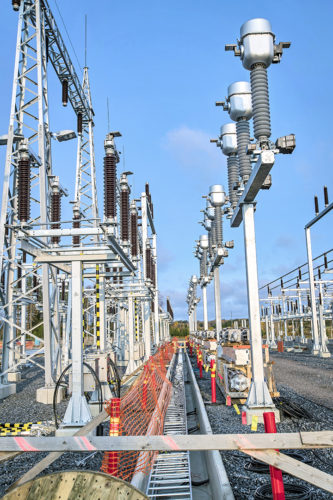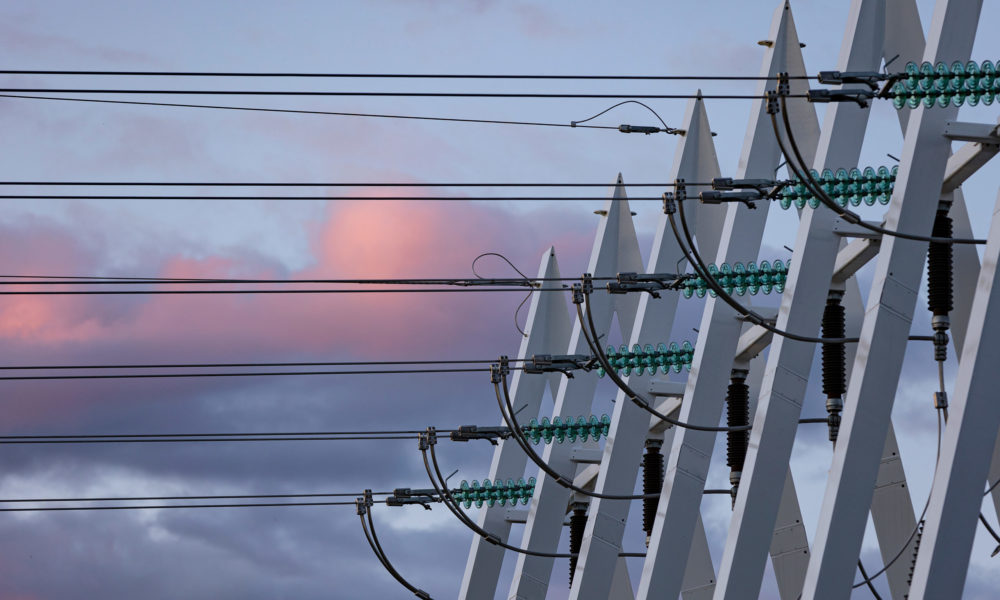
Fingrid has more than a hundred substations. When a new substation is built, it is expected to last 40 years before an overhaul is required. Power line structures last substantially longer than this.
Every year, two or three substations are overhauled, and some are replaced entirely. Decisions on whether to renovate or replace substations are based on condition reports, and any old structures are reused whenever possible. During refurbishment, the key focuses include chemical safety and material efficiency, and efforts are made to reduce the carbon footprint by decreasing the number of times it is necessary to travel to the site.
“We endeavour to do a lot in one go. The necessary refurbishment of substations are combined with investments in the network development plan so as to reduce the amount of overlapping work. When individual devices are replaced, we check whether an equivalent device is free elsewhere. However, we do not replace individual devices if the substation is due for overhaul or replacement in the near future,” says Juha Mertanen, Expert at Fingrid.
Refurbishment enable the service life of substation structures to be maximised. The main equipment has a design life of 40 years from commissioning, so the station structures can still be used. Transformers can last up to 60 years.
“This can be achieved by conducting mid-life refurbishment on the transformer at the substation mid-way through its life cycle, when the device is serviced and the auxiliary systems are replaced,” Mertanen says.
Refurbishment involve recycling hazardous waste.
“Some of the equipment in a substation, such as the transformers and circuit-breakers, use oil and gas as insulation agents. For example, sulphur hexafluoride, which is used in substation equipment, is a powerful greenhouse gas, and special care is required when handling this gas. When the equipment is dismantled, our contractual supplier empties the gas and oil from the devices and recycles it.”
The life cycles of substations are monitored digitally
In the future, the internet of things (IoT) and digital technology will help to monitor the life cycles of substation equipment.
“Substation refurbishment are scheduled with the help of IoT data. The data sent by sensors means that on-site maintenance measurements are no longer required, so there is less need to travel to the site. Refurbishment are scheduled when they are really needed,” Mertanen says.
Digital geographic data is used to manage vegetation in power line corridors.
“Vegetation management takes place on Fingrid’s Elvis system. For example, we collect information on conservation areas from the authorities and other sources and store it in geolocation software so we can take biodiversity into account. This enables service providers to receive information and instructions on what needs to be done on special sites and when it should be done,” says Mikko Nykänen, Expert at Fingrid.
Transmission line areas may be home to endangered species
Transmission line areas are cleared every 5–8 years, and the trees in border zones are treated every 10–25 years. Clearing is carried out selectively – low-growing trees and bushes are left to grow. Everything is done mechanically, either by machines or by foresters.
“The regular clearance of transmission line areas is a good thing for biodiversity. A light, open power line corridor also makes for a suitable habitat for endangered species, replacing the meadows and grazing land that is in increasingly short supply,” Nykänen says.






